巻号一覧

47 巻, 8 号
選択された号の論文の4件中1~4を表示しています
- |<
- <
- 1
- >
- >|
論文
制御
-
小杉 和也, 滑川 徹2011 年47 巻8 号 p. 329-336
発行日: 2011年
公開日: 2012/01/21
ジャーナル フリーThis paper deals with a sensor scheduling problem which considers state dependent noise and processing delay. A networked sensor system usually consists of a large number of sensors, which can be constructed with some different types of sensors. We propose a sensor scheduling algorithm based on the neighbor search algorithm nearby nodes for discrete time heterogeneous systems by minimization problem of assessment function. Finally experimental results show effectiveness of the proposed method.抄録全体を表示PDF形式でダウンロード (746K)
システム・情報
-
吉田 誠, 三宅 美博, 古山 宣洋2011 年47 巻8 号 p. 337-345
発行日: 2011年
公開日: 2012/01/21
ジャーナル フリーWe studied the process of information integration through observing the pragmatics and the dynamics of conversations between two people toward a consensus. We analyzed the conversations from both the pragmatics and the dynamics side. From the pragmatic perspective, the temporal development of pragmatics regarding their consensus was analyzed using conversational analysis and subjective evaluation. On the other hand, from the dynamical perspective, the temporal development of response time of utterance was analyzed using correlation analysis. As results, their typical developments as follows were clarified. The stages in pragmatics regarding a consensus were taking turns alternately toward a consensus. The subjective evaluated values on consensus increased toward the end of the conversation. The response times between two people were synchronized toward a consensus. These results indicate that both pragmatics and dynamics side have features of synchronization. It is suggested this feature plays typical feature for consensus building in this experiment.抄録全体を表示PDF形式でダウンロード (1153K)
産業応用
-
—液面振動の逆モデルを利用した制振法—浜口 雅史, 谷口 隆雄2011 年47 巻8 号 p. 346-351
発行日: 2011年
公開日: 2012/01/21
ジャーナル フリーThis paper proposes a damping control of sloshing in a cylindrical container with a swing-type active vibration reducer on a wheeled mobile robot (WMR). The WMR runs along a straight path on a horizontal plane. The container is mounted on the active vibration reducer. A laser displacement sensor is used to observe the liquid level in the container. The container can be tilted in the running direction by the active vibration reducer. A sloshing model is obtained from a spherical pendulum-type sloshing model, which approximately expresses (1, 1)-mode sloshing. The sloshing model is used to design a damping control system. The control system of the active vibration reducer is designed with an inverse model of sloshing and an optimal regulator with a Kalman filter. The WMR is driven by an acceleration pattern designed with an input shaping method. The usefulness of the proposed method is demonstrated through simulation and experimental results.抄録全体を表示PDF形式でダウンロード (769K)
ショート・ペーパー
-
新銀 秀徳, 小河原 加久治2011 年47 巻8 号 p. 352-354
発行日: 2011年
公開日: 2012/01/21
ジャーナル フリーThis paper presents a continuous Lyapunov function for asymptotically stable periodic orbits of nonlinear systems based on Poincaré map. The function is constructed from a Lyapunov function for discrete-time dynamics on a local section by using the times required for the state to cross the section when it is propagated forward and backward in time.抄録全体を表示PDF形式でダウンロード (181K)
- |<
- <
- 1
- >
- >|